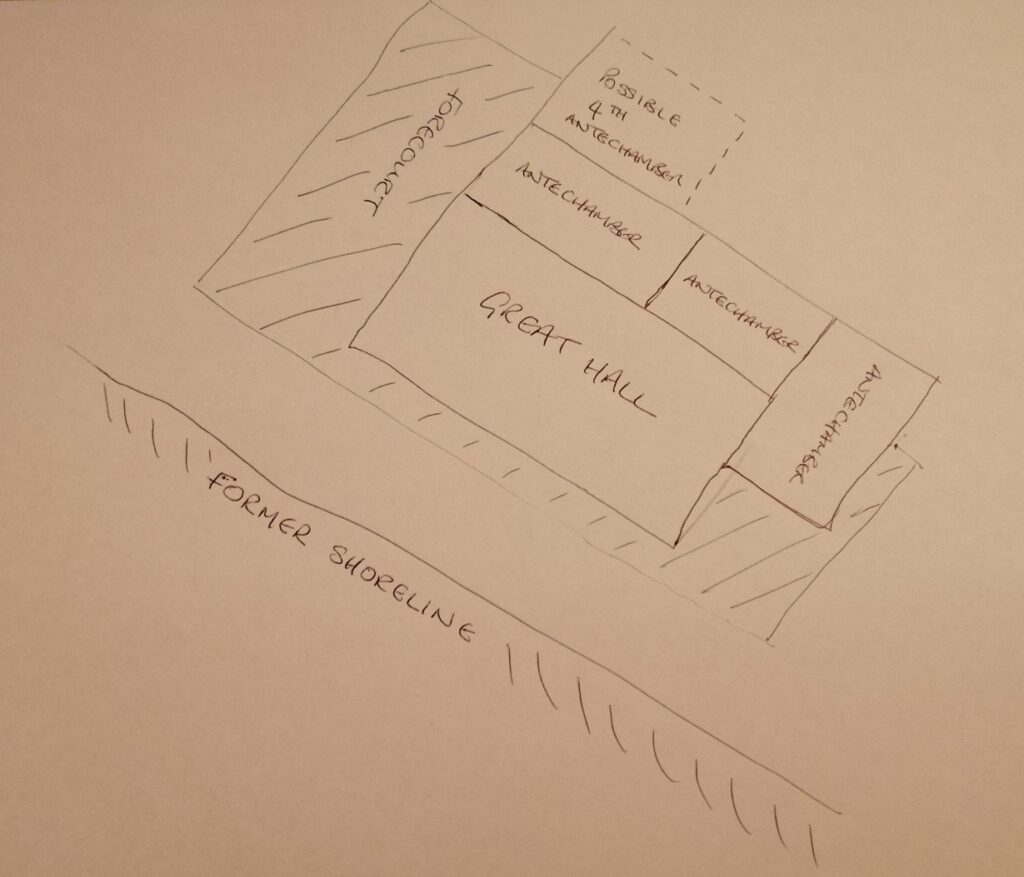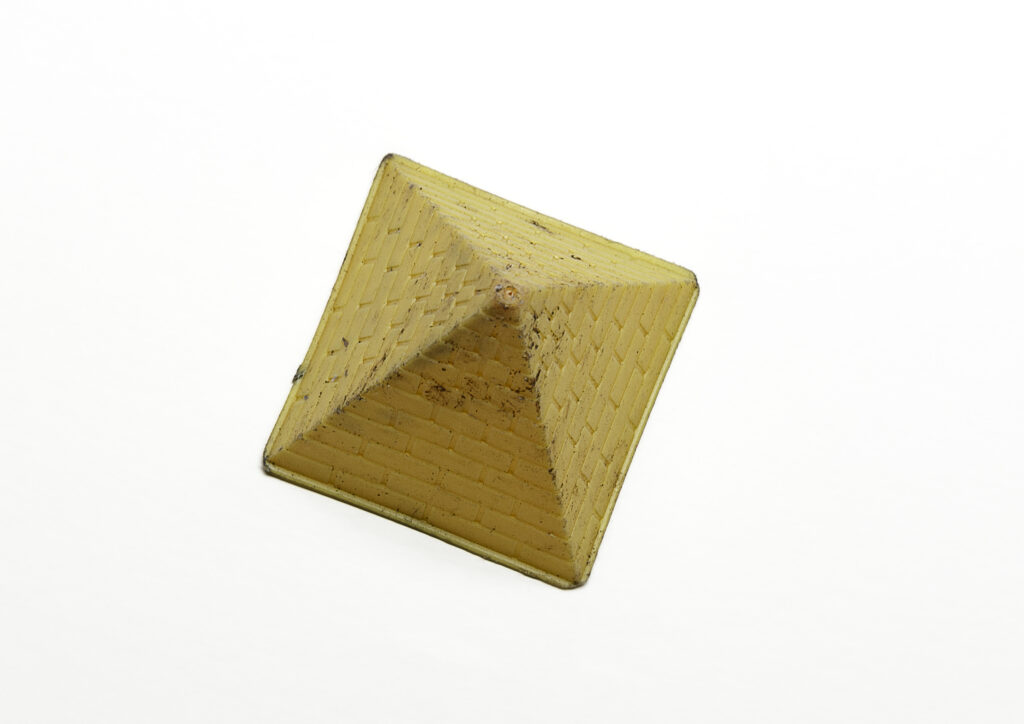Please note: this exhibit will be updated as further research brings more evidence of the past to light. Please check back later for updates.
Introduction
Our Island’s remarkable history of continuous human habitation was perhaps most in peril during the Plastics Age. This relatively short period followed closely on the flowering of arts and engineering during the Ceramics Era and was itself at least partly responsible for the Great Schism. It was a difficult period for the region, which saw a dramatic drop in population. Some islands were completely abandoned, while others, such as this, were left with a dwindling, ageing and weakened population. The artefacts in this display help us to imagine how the people of this dark time faced the cycles of disease, war and famine that characterised the pre-Schism years.
The Ettrick Bay Squarehouse
The objects displayed here were discovered during an excavation of the remains of a large, isolated late-Plastics Age structure close to the current shore line on the west coast of the Island known as the Ettrick Bay Squarehouse.
Like similar Squarehouses found in other regions, this building appears to have been of great cultural significance and was probably used for important communal rituals.
It consisted of a spacious hall with three smaller antechambers along the north-eastern and southern-western sides. A fourth antechamber may also have been constructed outside of the rectangular footprint. On its northern-western side, there is evidence of a large forecourt where members of the community would have gathered.

The presence of the Squarehouse suggests that this was a special site, perhaps imbued with spiritual significance. Its alignment on a north-west/south-east axis, following what would have been the line of the shore at the time of its use, is consistent with the theory that, during the late Plastics Age, the people of the Island laid great importance on the sea and the bounty it provided. Perhaps that importance had grown as the bounty diminished.
The Ettrick Bay artefacts
The objects in this exhibition were found outside of the perimeter of the Squarehouse itself. There is ongoing debate amongst the archaeological community as to the nature of the cache. Some contend that the mixed nature of the find, which includes objects of a clearly mundane, domestic nature, indicates a midden. Others argue that the presence of what are clearly ritual objects indicates a shrine or even the burial of an important member of the community.
Whichever interpretation you prefer, it is clear that the artefacts found at the Ettrick Bay site can help us to understand the lives of those who lived around the time of the Great Schism. While some of the objects will seem familiar to modern eyes, others are more mysterious, reminding us of how alien the Plastics Age was to our own.
The Ettrick Erotemes

These fascinating objects are all formed in the shape of an eroteme. This suggests that this icon – so familiar to us as central to our own culture – was already a symbol of power in this distant era. Because they are made from plastics and metals, direct carbon-dating is impossible. However, organic matter has been found in ancient dirt extracted from the intricate carvings that decorate the largest, most stylised object in the group. This suggests a minimum age of 500 years, consistent with burial of the objects during the late Plastics Age.
The three larger objects are likely to have had ceremonial or ritual uses. The fourth, smaller object may well have been used as a personal talisman, carried or worn by an individual to ward off evil spirits.
As we know, the Great Schism occurred when humanity stood at the edge of the abyss: some chose a new path, based on enlightened principles of critical ethical reflection and reasoning. Others foolishly chose a path of continued consumption, putting their faith in what proved to be unreliable hierarchies of technopower. Perhaps these objects are early material manifestations of our own culture’s central tenet: to constantly ask ourselves whether what we are doing is right and good?
Everyday Life

1-3. Footwear and headgear
Although different in design and material to contemporary footwear, these objects are nonetheless recognisable as shoes. Their size suggests that the people of the late Plastics Age may have been larger/taller than we are now – a theory that is consistent with our knowledge of the overconsumption that characterised the period. The fine, soft weave of the material forming the upper covering of the black shoe suggests it may have been worn by a woman of some wealth, who did not need protection from the elements. The open sandal may have been worn by a child.
The helmet may have offered protection to miners engaged in the dangerous work of extracting plastics from the pits that formed during the late Plastics Age.
4. Metal vessel
The spout on this vessel suggests it was most likely used for holding and dispensing liquids.
5-6. Rope and net
These everyday items may seem familiar but they are all fabricated from kinds of Plastic.
Forgotten Rituals?


1. Pyramid and carved plastic ball
The purpose or use of these objects remains unknown. However, their shapes suggest continuity with the earlier civilizations of Ancient Egypt and the Northern European Neolithic.
2. Grass/foliage veneration

These objects are representations in Plastic of local foliage and grasses. They suggest that the people of the late Plastics Age may have venerated such natural organisms, which they would likely have sensed were in danger of permanently disappearing from the biosphere.